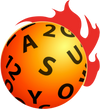How Eye Movements Support Gait and Walking Fluidity in Parkinson’s

Walking may seem automatic, but in reality, it requires constant coordination between the eyes, brain, and body. For people with Parkinson’s disease, gait becomes disrupted, often appearing shuffling, uneven, or rigid. But what’s less known is that eye movement training—especially exercises that improve gaze control, tracking, and scanning—can directly support smoother, more confident walking.
Here’s why this matters: each step we take is guided by visual information. The eyes scan the environment, plan where to step next, and provide feedback to the brain about speed, direction, and obstacles. In Parkinson’s, these visual-motor connections can break down due to dopamine loss and motor circuit disruption. The result? Delays in gait initiation, shortened stride length, and reduced rhythm while walking. But research shows that strengthening eye movement skills can retrain the brain to walk more fluidly.
When you practice exercises that involve saccades (quick gaze shifts), pursuit movements (smooth tracking), and fixations, you’re stimulating brain regions responsible for both eye and leg control—like the basal ganglia, frontal cortex, and cerebellum. This dual activation helps the brain regain its timing cues for movement, supporting more natural walking patterns. It’s a powerful, non-pharmaceutical approach to improving gait.
The BrainSpeed Ball® was designed with this connection in mind. As users visually track the ball and respond with quick actions, they are training the “see-decide-act” circuit—the same circuit the brain uses while walking through a room or adjusting to changes in terrain. The BrainSpeed Ball® encourages gaze shifts, timing, and reaction, all of which are essential for dynamic gait. Many users report feeling more stable and coordinated after just a few minutes of consistent use.
Supporting gait through eye training doesn’t require hours of rehab—it just takes the right kind of consistent, engaging activity. When eye movement is trained alongside motor control, the brain receives the integrated input it needs to create smoother, safer walking. For people with Parkinson’s, this can be a meaningful step toward greater independence and confidence.
Learn about our Parkinson's Specific Training Program Here:
Sources:
Mirelman, A., Bonato, P., & Deutsch, J. E. (2009). Effects of training with a robot-virtual reality system compared with a robot alone on the gait of individuals after stroke. Stroke, 40(1), 169–174. https://doi.org/10.1161/STROKEAHA.108.516328
(Note: Though stroke is the primary focus, this paper discusses how visual-motor training enhances gait, which applies to Parkinson’s motor recovery strategies as well.)
Azulay, J. P., Mesure, S., Amblard, B., Blin, O., Sangla, I., & Pouget, J. (1999). Visual control of locomotion in Parkinson’s disease. Brain, 122(1), 111–120. https://doi.org/10.1093/brain/122.1.111

